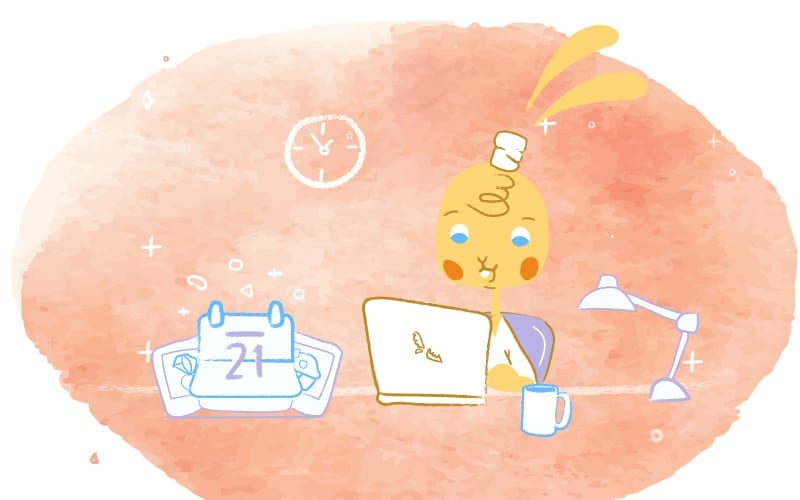

According to Upwork’s “Future of Workforce Pulse Report,” by 2025, 36.2 million Americans will be working remotely. That’s an impressive 87% percent increase from pre-pandemic levels.
“Our research shows the long-lasting impact that remote work and COVID-19 are likely to have on how hiring managers think about their organizations,” says Upwork Chief Economist, Adam Ozimek. “As businesses adapt and learn from this remote work experiment, many are altering their long-term plans to accommodate this way of working. On work marketplaces like Upwork, we can already see this shift underway with increased demand for remote professionals.”
For many, the support of work from home jobs should come as welcome news. After all, people tend to be happier and more productive when working from home. It also allows you to tap into a larger talent and save money since you don’t have a large office.
But, there are also drawbacks to remote work. Loneliness is often cited as the biggest challenge. However, it can also be a struggle to meet deadlines and communicate effectively.
How can you solve all of these problems? By making collaboration a priority. And, to get started, make sure that you aren’t committing the following nine mistakes.
1. Creating teams just because.
There are over six decades of research that have show that individuals are more creative than teams. What does that mean? Well, when it comes to creative tasks, like generating ideas, you might want to scrap the brainstorming session.
“Please don’t create a team just for the sake of creating a team,” says Leigh Thompson, the J. Jay Gerber Professor of Management and Dispute Resolution at the Kellogg School. “People hate that.”
In addition to sparking creativity, having “me” time can be incredibly powerful. Solitude has been found to relieve stress, give you a chance to reflect, and practice gratitude. Moreover, this aids in planning and can strengthen your relationships.
Related: Why You Should Schedule Dedicated ‘Me Time’ If You Don’t Get Enough Right Now
2. Lack of a common purpose.
“Like many parts of leadership, this is not rocket science,” writes Ben Brearley BSc. BCM MBA. “It is not meant to be a detailed, exhaustive list of roles and responsibilities.” Rather, “purpose simply acts as a guiding vision for your team.”
`Brearley adds that team purpose should contain the following three elements;
- A “functional statement about what your team does.”
- Why your team is important and are doing what they do.
- How your team delivers.
When you have all three parts, and clearly let them be known, you’ll be able to decide “whether you are in (committed) or out (choosing not to take on the work),” states Brearley. Additionally, it assists in modeling the right behavior and connect to a higher meaning.
3. Ignoring time zones/schedules.
Let’s say that you reside in the Eastern Time Zone. By 9 a.m., you’re ready to tackle the day. So, you start sending out Slack messages, emails, or even prepare for a meeting at 9:30 a.m.
The problem? Several of your colleagues are out on the West Coast. It’s unreasonable to expect them to respond to your messages or attend a virtual event when it’s only 6:00 a.m. or 6:30 a.m.
Even if you’re in the same time zone, be self-aware that working remotely means having different schedules. You might be a morning bird. But, others could be night owls and might not be online when you are.
Tools like Calendar by handling availability across time zones. So, when you’re scheduling an event, you can see what time it is for your team members before adding it to everyone’s calendar. You could also poll your team to figure out the best time for everyone to get together.
4. Building brick walls.
Are you not listening to others? Do you allow your team members to share their opinions or ask questions?
In other words, are you being stubborn and not accepting different points of view? If so, then that’s not exactly a supportive, positive, and collaborative environment. It sounds more like a dictatorship.
Let everyone voice their opinions and input. Encourage them to ask questions. And, make sure that not only listen to them but act on their suggestions.
Most importantly? Grant autonomy and let your team do things their way.
5. Over-participating.
“Over-participating and taking on too much within a team can stifle group collaboration by sapping the oxygen in the room and making team members feel unheard and excluded,” writes Sabina Nawaz for HBR. But, you can avoid overtaking the group by taking the following steps;
- Find your unique contribution. It’s 4th, and 10 and your football team is on the 20-yard line. You wouldn’t call in your linebacker to kick a field goal. Have the right people playing the right positions.
- Redefine what it means to be helpful. When it comes to groups, figure out where you belong. Sometimes you might just be an onlooker from the sidelines or helping out with busy work.
- Stay quiet. “Mute before you refute to see how the discussion goes,” states Nawaz.
- Negotiate a realistic timeline. The team should all agree on deadlines that work best for everyone, so that aren’t any bottlenecks.
Related: How to Focus Employees Who Are Too Helpful With Their Ideas
6. Not creating channels to share ideas.
If you go by the dictionary, then sharing ideas would count as collaborating. But, that’s not always the case in the real world.
Think about when you have your best ideas. It’s not when you’re forced or put on the spot. It happens more organically, like when taking a shower or going for a walk.
As such, provide multiple channels throughout the day for your team to share their ideas when the iron strikes hot for them.
To be fair, this would be much easier in a physical workplace. For example, there could be in-person lunches or drop-bys. But, you can still do this remotely by;
- Planning virtual lunches and water-coolers.
- Shared docs or dedicated Slack channels for ideas.
- A process for vetting ideas.
7. Using the wrong tech.
Just because you’re an Apple devotee doesn’t mean that everyone is as well. With that in mind, it wouldn’t make sense to schedule all video calls on FaceTime. Instead, you would choose a platform that all of your colleagues use and are comfortable with.
Furthermore, make sure that you’re using the right communication.
“Having a surplus of communication and collaboration tools is great,” writes Deanna Ritchie in a previous Calendar article. “At the same time, you don’t have to collect them all. We’re not talking about Pokemon here.”
“Instead, limit the tools that you’re using,” Deanna recommends. “Besides decreasing distractions, it prevents everyone from bouncing back-and-forth between tools. And, it can also help avoid information overload.
8. Getting too comfortable.
Routines can kill creativity. How can your team be innovative when everyone is nice and cozy? By that, I mean working with the same people on familiar tasks day-in-and-out.
Rather than digging you and your team into a rut, push everyone out of their comfort zones by;
- Creating a more innovative climate. Encourage your team to take on new roles that they find exciting and challenging. You can also push them to work on side projects.
- Assemble diverse and inclusive teams. You can do this by having a team that is comprised of people from various backgrounds, geographical settings, and/or business units.
- Shake-things up. As opposed to a tired, virtual team meeting, freshen it up. For example, you could host something like a hackathon to get the creative juices flowing.
Related: Beyond The Comfort Zone: Building A Model Workforce
9. Your team has become a victim of natural pitfalls.
According to renowned author Patrick Lencioni, “companies fail to achieve effective teamwork because they unknowingly fall victim to five natural pitfalls that progress like falling dominos, one after another,” notes Jody Michael Associates. These include the five following dysfunctions;
- Absence of trust. “In this context, trust is the ability of team members to make themselves vulnerable— essentially revealing weaknesses without concern about repercussions,” add the authors. To achieve vulnerability-based trust, use personal histories and team effectiveness exercises. And, profile personalities.
- Fear of conflict. Don’t run away from healthy debates. Conflicts can encourage open-mindfulness and prevent groupthink. It’s suggested that you use tools like the Thomas-Kilmann conflict mode instrument (TKI). You can also encourage them to be “miners” and encourage engagement.
- Lack of commitment. Commitment is simply “a function of clarity and buy-in.” You can accomplish this by reviewing key decisions, establishing deadlines, and discuss Plan B.
- Avoidance of accountability. “In this context, accountability refers to the willingness of team members to call out their peers on behaviors that might hurt the team,” state the authors. To ensure that this happens, publish objectives and standards, have a progress review, and reward your team.
- Inattention to details. “Avoidance of accountability creates an environment in which team members put their individual needs (such as career) or even divisional needs (such as status) above the team’s need for results,” they write. To avoid this, publicly declare your desired results and align team members’ rewards to specific outcomes.
Image Credit: ekaterina bolovtsova; pexels; thank you!











John Rampton
John’s goal in life is to make people’s lives much more productive. Upping productivity allows us to spend more time doing the things we enjoy most. John was recently recognized by Entrepreneur Magazine as being one of the top marketers in the World. John is co-founder and CEO of Calendar.